Oglebay Plaza U.S.S. West Virginia Mast
Introduction
Text-to-speech Audio
Images
The arrival of the U.S.S. West Virginia mast at WVU 1961.
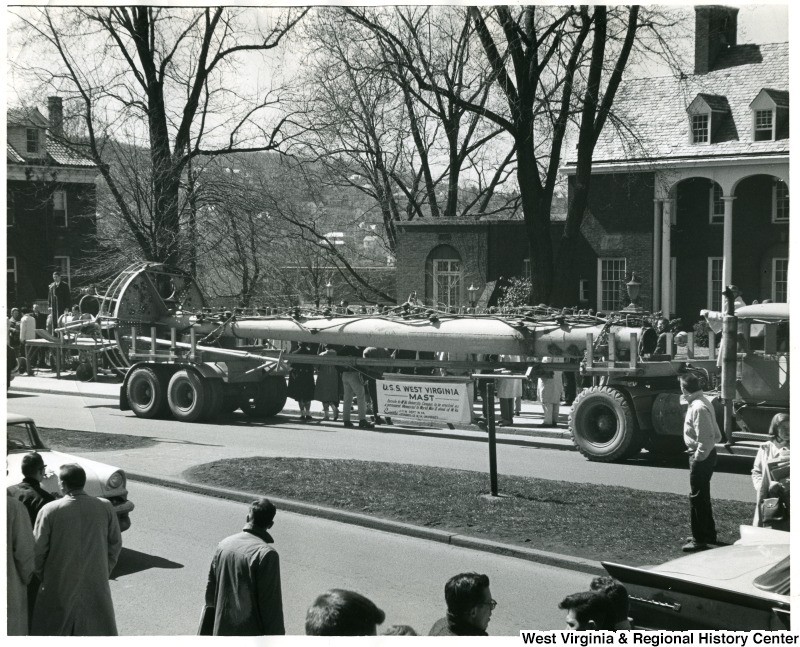
The mast memorial at Oglebay Plaza 1963.
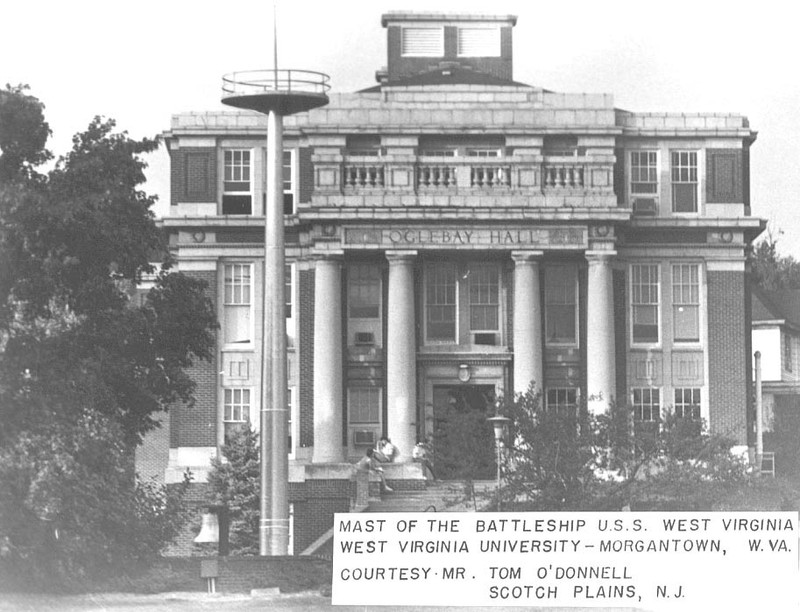
Students and Faculty gather around the mast during arrival.
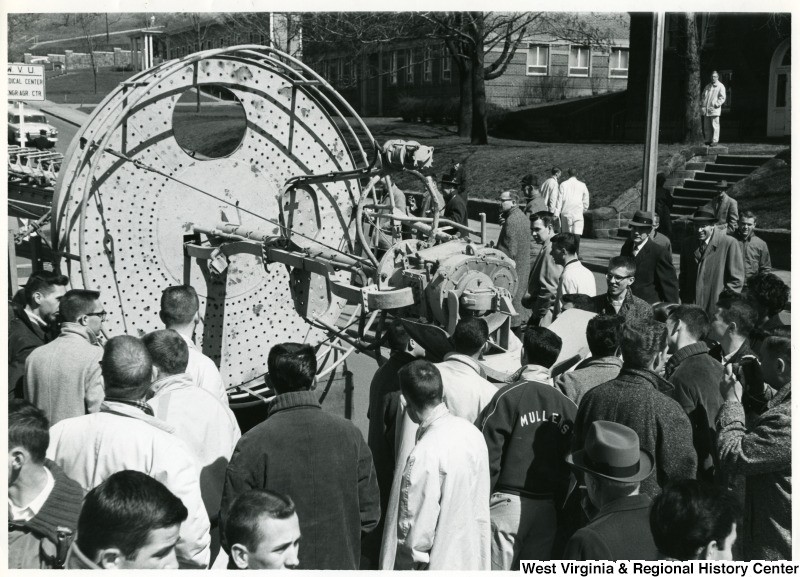
Plaque honoring Pearl Harbor.
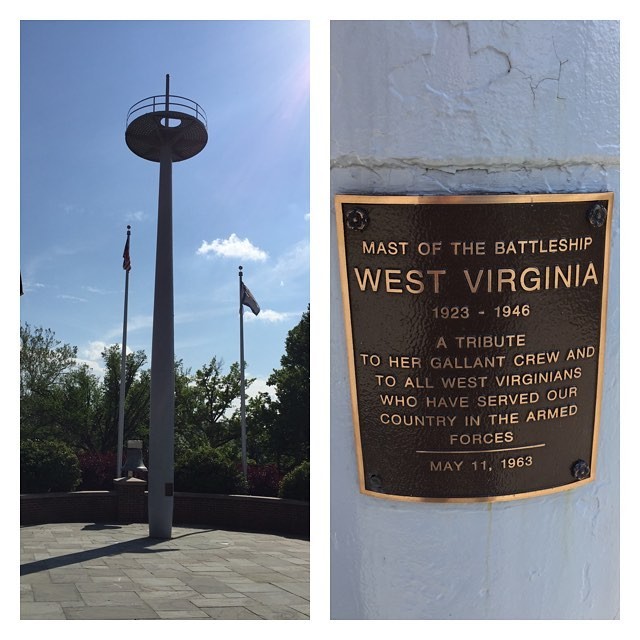
The bell of the armored cruiser U.S.S West Virginia later installed next to the mast.
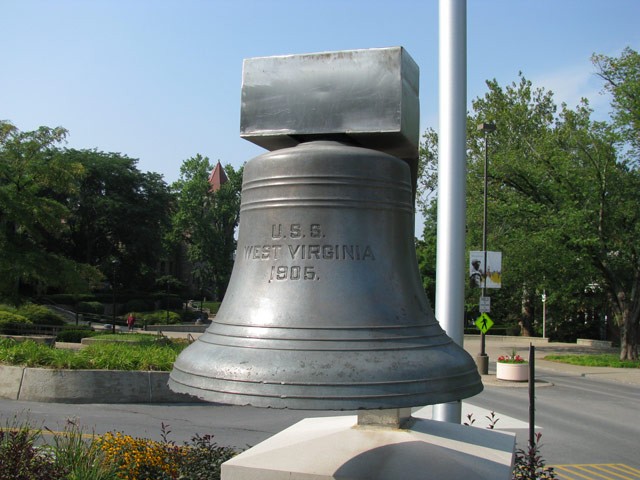
Winter time at the Mast.
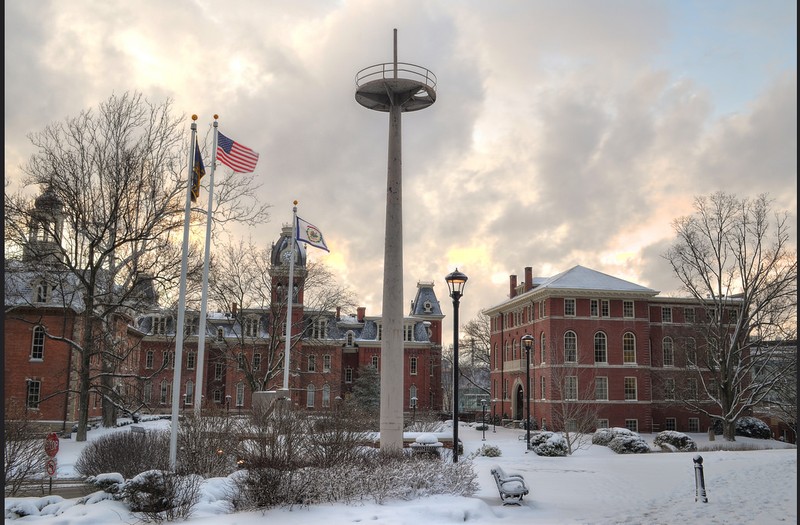
Backstory and Context
Text-to-speech Audio
The U.S.S. West Virginia received its name through the sponsorship of Miss Alice Wright Mann of Mercer County, the daughter of Isaac T. Mann, a prominent West Virginian coalmine operator. Under the command of Capt. Thomas J. Senn, the U.S.S. West Virginia BB-48 was commissioned on December 1,1923. This was the last American Battleship to be launched prior to the restrictions imposed by the 1922 Washington Conference on Limitation of Naval Armament, and was the latest and most advanced "super dreadnoughts" of it's time. After training, repairs, and change in captains, the U.S.S. West Virginia became the flagship for the Commander, Battleship Divisions, Battle Fleet, on October 30, 1924. In the late 1920s, the battleship was armed with more artillery to keep up with technological advancements.
"In the closing years of the decade of the 1930s it was becoming evident to many that it was only a matter of time before the United States became involved in yet another war on a grand scale. The United States Fleet thus came to be considered a grand deterrent to the country's most probable enemy Japan. This reasoning produced the hurried dispatch of the Fleet to Pacific waters in the spring of 1939 and the retention of the Fleet in Hawaiian waters in 1940, following the conclusion of Fleet Problem XXI in April."1
Commonly referred to as "WeeVee," the U.S.S. West Virginia was one of the first ships engaged at Pearl Harbor.2 Slightly before 8:00am, the Japanese executed a well planned air raid on the fleet stationed on Oahu and managed to destroy nearly 20 American naval vessels, including eight enormous battleships, and more than 300 airplanes. The first bomb that struck the U.S.S. West Virginia collapsed the superstructure deck, and caused the galley to catch fire which resulted in the detonation of the projectiles that were stowed in the casemates. The second bomb did not detonate, however it still managed to damage the battleship's artillery.The torpedo attack on the U.S.S. West Virginia caused the most damaged, as it tore through the ship's port side and caused flooding. Lt. Claude V. Ricketts and other crew members saved the ship from capsizing by utilizing their damage control training.1 The U.S.S. West Virginia was abandoned and sank to the bottom of Pearl Harbor, later to be resurrected and repaired to serve the rest of the war.
On January 9,1947 "WeeVee" was decommissioned and became part of the Pacific Reserve Fleet until 1959 when she was sold for scrap to the Union Minerals and Alloys Corp. of New York City. In 1961 numerous items from the ship were donated to the state of West Virginia. The mast of the ship went to WVU and was installed as a Pearl Harbor Memorial on May 11, 1963. Ceremonies honoring Pearl Harbor day and veterans have been held in front of the mast annually since the 1970s. The bell that is rung during these ceremonies was placed next to the mast on December 7, 1967, and is from the armored cruiser U.S.S. West Virginia.2
On May 19, 2016, Professor Satake of WVU and his class started a petition to Congress to create a permanent memorial honoring the USS West Virginia at Pearl Harbor. You can find the petition at change.org. The link is provided below.3
Sources
1. “USS West Virginia History.” Accessed September 11, 2016. http://usswestVirginia.org/uss_west_Virginia_history.htm. 2."Pearl Harbor Day Events at WVU to Honor Fated USS West Virginia Crew." WVUToday. December 3, 2003. Accessed July 17, 2016. http://wvutoday.wvu.edu/n/2003/12/04/2406. 3."West Virginia Breaking News, Sports, Weather: WDTV.COM." West Virginia Breaking News, Sports, Weather: WDTV.COM. May 19, 2016. Accessed July 17, 2016. http://www.wdtv.com/wdtv.cfm?func=view.
